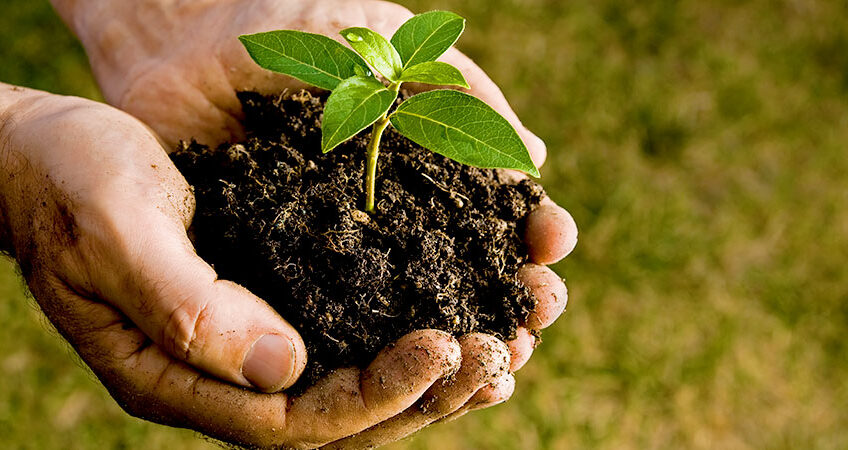Many view tree planting as an opportunity to leave behind a legacy–one that may benefit future generations, wildlife, and the environment. Whatever your purpose for planting trees, following the guidelines outlined in this publication can help you transform your land.
1. Dig the planting hole.
First, remove the tree container from the container and measure the root ball (the mass of soil and roots that comes out of the container) with the handle of your shovel to estimate the depth to dig. Dig the hole as deep as, and 2-3 times as wide as the root ball. It is very important that the root flare (the point where trunk widens and becomes roots) remains above the surface of the soil. To prevent air pockets below the tree, create a small mound of soil in the base of the hole and tamp down (press firmly but do not over-compact the soil) to prevent the tree from settling.
2. Massage/loosen/trim the roots and remove the nursery stake.
We have found that this step is key to robust tree performance. Roots should ideally radiate out straight from the center of the root ball. Lay the tree on its side with the root ball on a tarp and work gloved fingers in deeply to loosen and free the roots. Cut off any circling roots to prevent girdling (when circling roots get bigger, grow around the base of the tree and cut-off the flow of water and nutrients to other parts of the tree). This is a good time to cut the green ties and remove the nursery stake.
3. Place the tree in the center of the hole.
Rotate the tree until you find the best placement to keep major branches away from walkways or buildings. Hold the tree upright and fill in with soil around the root ball. Gently tamp down soil around the root ball with a shovel or the toe of your shoe to eliminate large air pockets. Do not step directly on the root ball, as this will damage and compact the roots.
4. Build a soil berm.
A soil berm is a mound encircling the tree, 10-12 inches from the trunk, which creates a basin or bowl that will hold approximately 10 gallons of water. The inside of the berm should be at the outer edge of the root ball. Keeping the root ball moist is essential until the tree is established.
5. Stake the tree.
Two ‘lodge pole’ stakes are used to help the young tree grow up straight until the roots are established. In parks and yards three stakes may be used to protect the tree from lawn mowers.
6. Tie the tree.
Ties should be placed at the lowest point on the trunk where the tree can be held straight, generally about 4 feet from the ground. Hold the trunk at the level you plan to tie it; the tree should stand straight without leaning. Create a figure 8 pattern with the tie, one loop around the trunk and the other around the tree. Nail the ends of the tie together into the stake.
7. Water the tree thoroughly!
Fill the basin with water and reinforce the berm if needed. Continue watering (once a week when there has not been a soaking rain) until established.
If You need help, Call Us or send a message.

